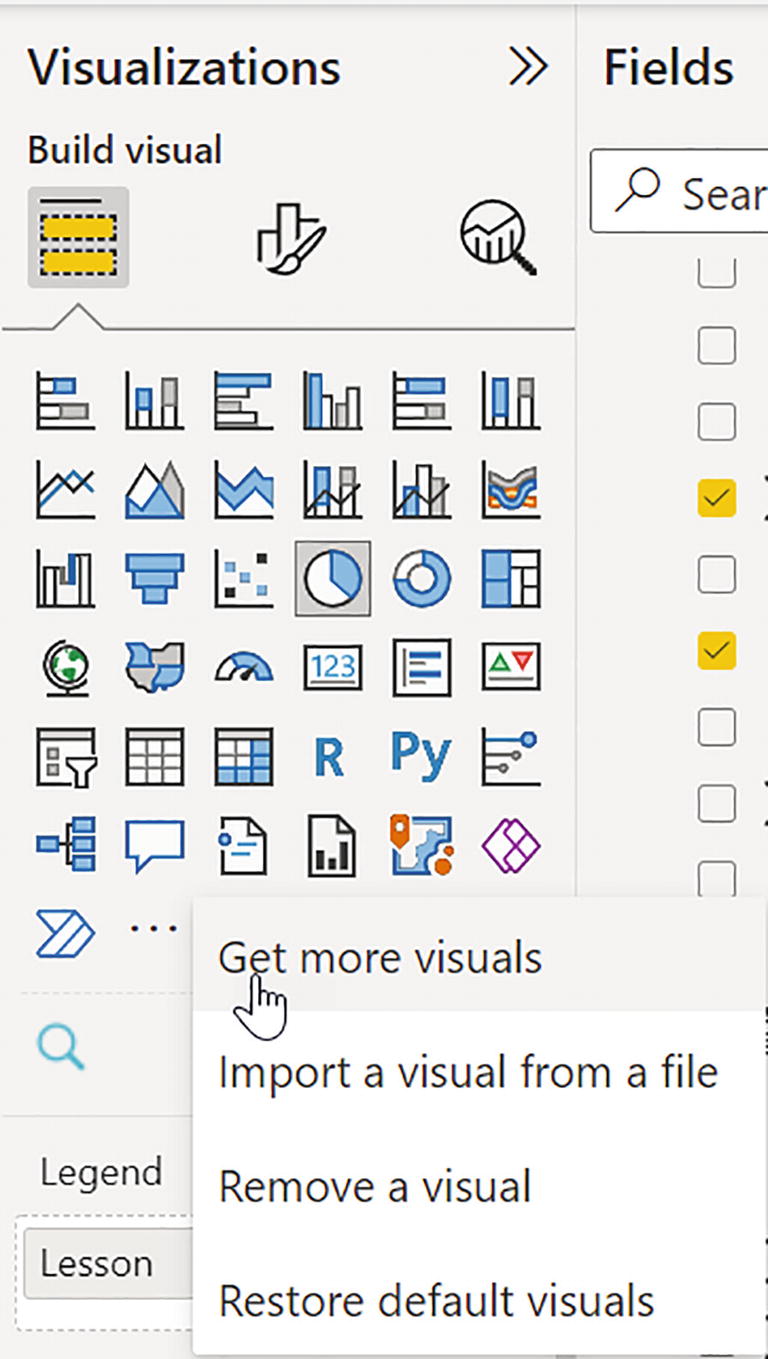I have done quite a bit of reporting over the years, from text-based reports with ToolBook applications, Crystal Reports from within VB 6 applications, SQL Server Reporting Services, and, one of my favorites prior to Power BI, Microsoft Report Viewer. In this chapter, I wanted to explore how a Report Viewer implementation might be adapted for Power BI. So I chose one of our own products, our Tracker.Net Learning Management System (LMS).1 It expands on our previous “direct to SQL Server” example. We have a simpler database structure and show how we can test our query in SQL Server Management Studio and then implement it directly within Power BI. We also look at the important topic of how to edit your drill-down interactions so they filter the other visuals rather than highlight their matching values.
Report in Tracker.Net

A screenshot of a tracker net window. Under the lessons tab, the reports tab is open. A file named student information is selected in the drop-down menu.
Selecting a Report in Tracker.Net

A screenshot of tracker net window. It has a table for the student information. 2 files of Jimi Hendrix and James McMurtry are selected.
Microsoft Report Viewer Display in Tracker.Net

A screenshot of a window. It has a drop-down menu to track organizations, students, student lesson information, and lessons. Below them are 2 tables.
Query in SQL Management Studio
SQL Query joining the Organizations, Students, StudentLessonInformation, and Lessons tables
We join the four tables, do some logic so that we don’t divide by zero when calculating the percentage test score, concatenate names in both Last Name, First Name and First Name Last Name format, and then exclude inactive students and lessons in our WHERE clause.
Connecting to and Transforming the Data

A screenshot of a window. Under the home tab, a drop-down menu to get data is open. A file named S Q L server is highlighted.
Get Data from SQL Server

A screenshot of a window headed S Q L server database. It has options for server, database, command timeout, and S Q L statement with an ok button.
SQL Server Query Inside Power BI
We enter the Server,5 Database , .and the Data Connectivity mode . Since this is a small data set, importing the entire query will work fine. For larger data sets, we could use DirectQuery, which does not load any data during development, but instead just loads the tables and columns. It then queries the data when used. We open the Advanced options and then paste in the query from Management Studio (shown back in Listing 14-1).

A screenshot of a window. A drop-down menu of change type from file options is open and the option to change the date is selected.
Changing Type from Date/Time to Date

A screenshot of a window headed custom column. A file of percent score is selected in the drop down menu of available columns on the right.
Custom Score column
This takes the PercentScore column (which has a value like 0.86) and multiplies it by 100. Power BI is smart enough not to have an error if the value is null. In that case Score will be null as well.

A screenshot of a window. Under the column tools, date format options are open from the drop-down menu of the format. The option of a short date is highlighted.
Changing the Date Format to Short Date
Visualizing the Data

A screenshot of power B I dashboard. On the right, count of query 1 index is highlighted in the column of visualizations.
Power BI Visualization

A screenshot of the visualizations column. The 3 options to get more visuals are open in the build visual option.
Getting Additional Power BI Visuals

A screenshot of a window-headed power B I visuals. Under the all visuals tab, the search option on the right and the text filter visual are highlighted.
Adding a Search Visual

A screenshot of tracker net window. It has a pie chart with searched student names, lessons, and the average scores in the centre.
Search Showing Tooltip of Lesson Info
Notice how the tooltip of the # of Lesson s and Average Score shows up when we hover over a user, in this case Jimmy Buffett.7 Notice how the other visuals are updated as well with only the lessons, statuses, and detailed information associated with Jimi Hendrix and Jimmy Buffett.
Updating the Drill-Down Interactions

A screenshot of a window. The happy lessons with the number of students and scores are highlighted in the pie chart of scores by lesson.
Default Highlight Drill Down Interaction

A screenshot of a window. The format data slash drill tab, options to edit interactions, arrange, and filter are highlighted.
Changng Interaction from Highlight to Filter

A screenshot of a window. It has 3 pie charts and a table. The happy lesson in the pie chart of scores by lesson is highlighted.
Filter Drill Down Interaction
Summary
In this chapter, we transformed an older reporting approach into Power BI. We connected to a real-life SQL Server database, transformed our data with a custom column, updated data types, an index column, and by renaming our columns for clarity. We customized our data display format and then visualized our data with the normal mix of cards, slicers, charts, and tables. We added a Search control to allow the user to search for key data like the student and lesson names. We then saw how to change our drill-down interaction from highlight to filter, which I find preferable in most cases.
